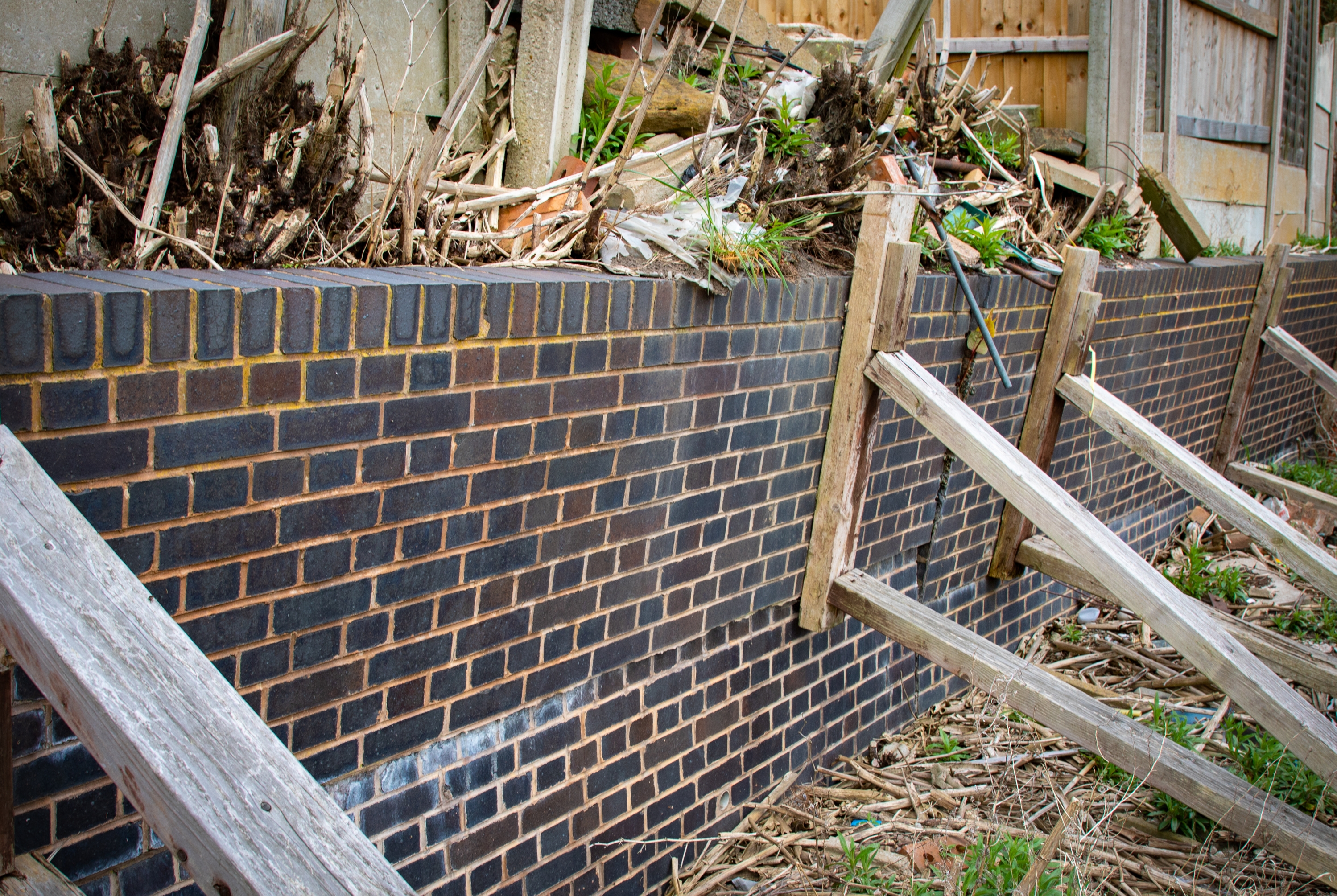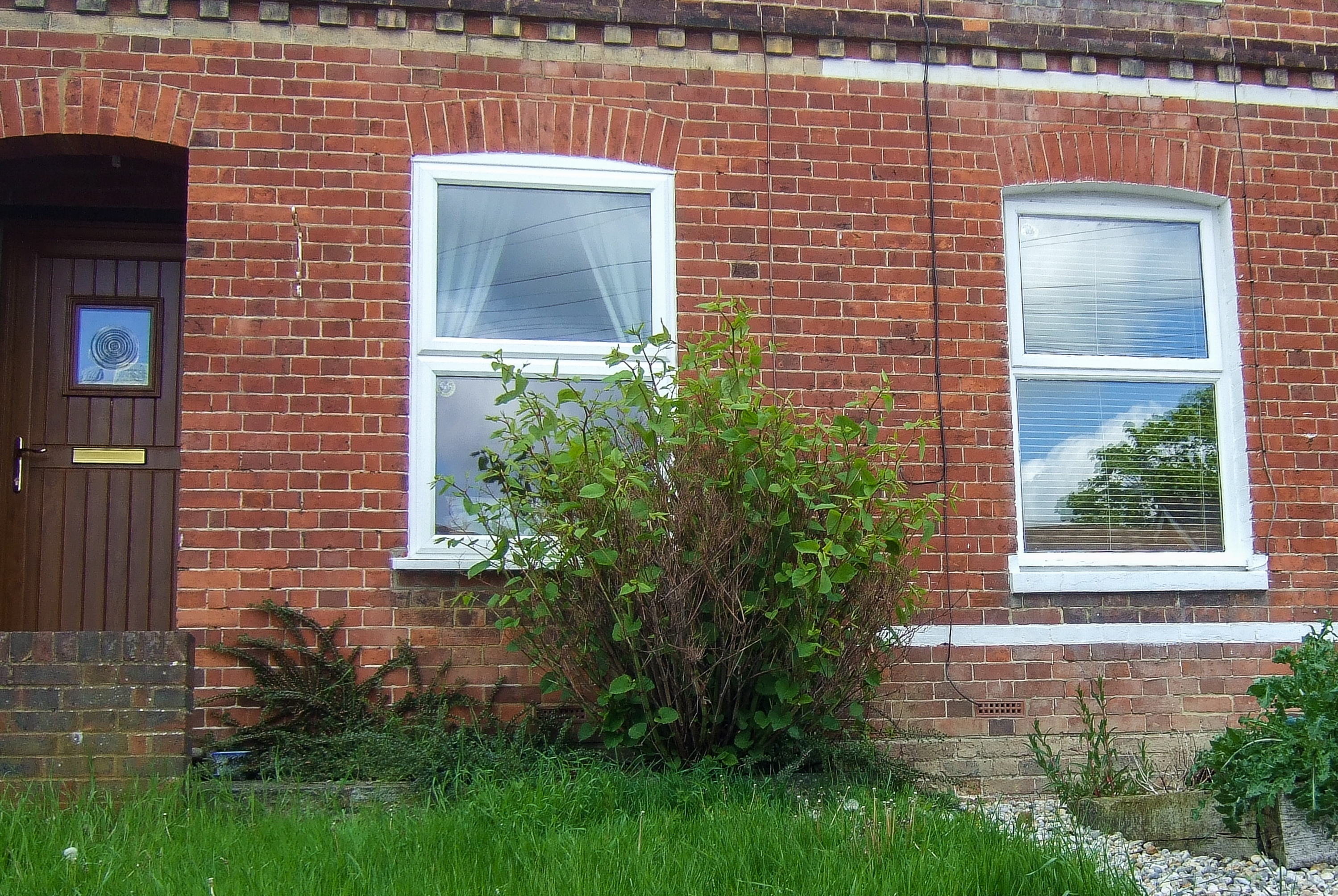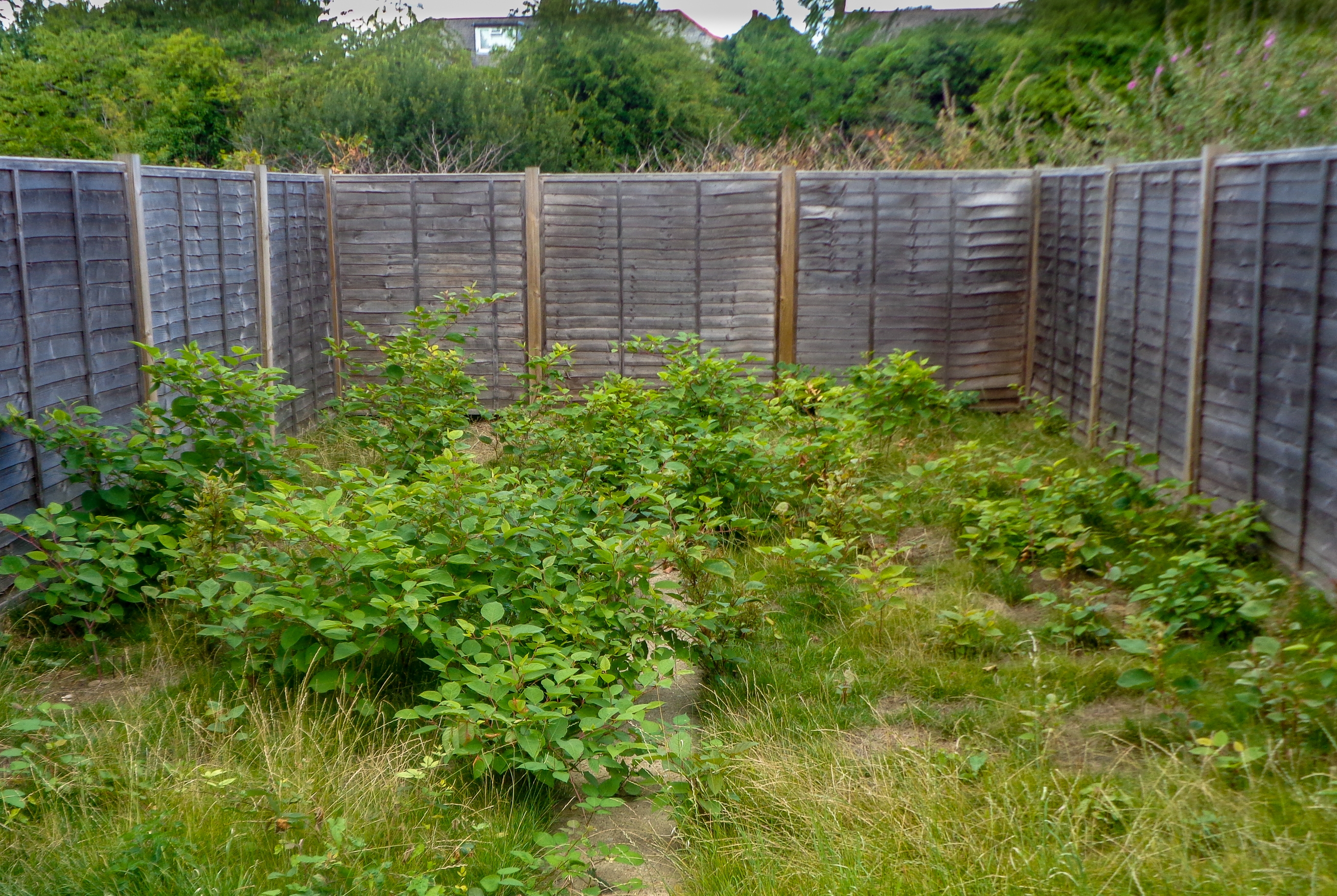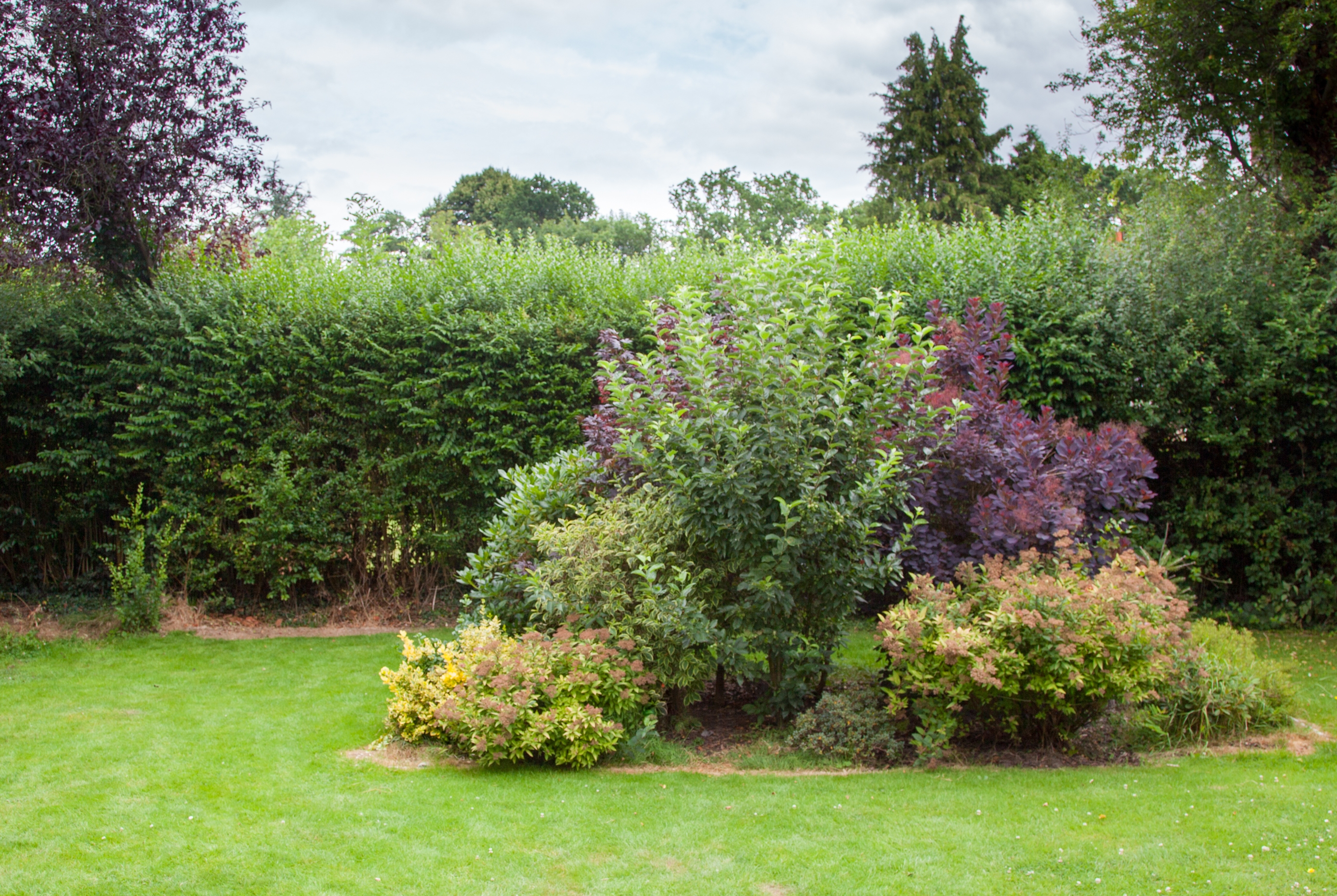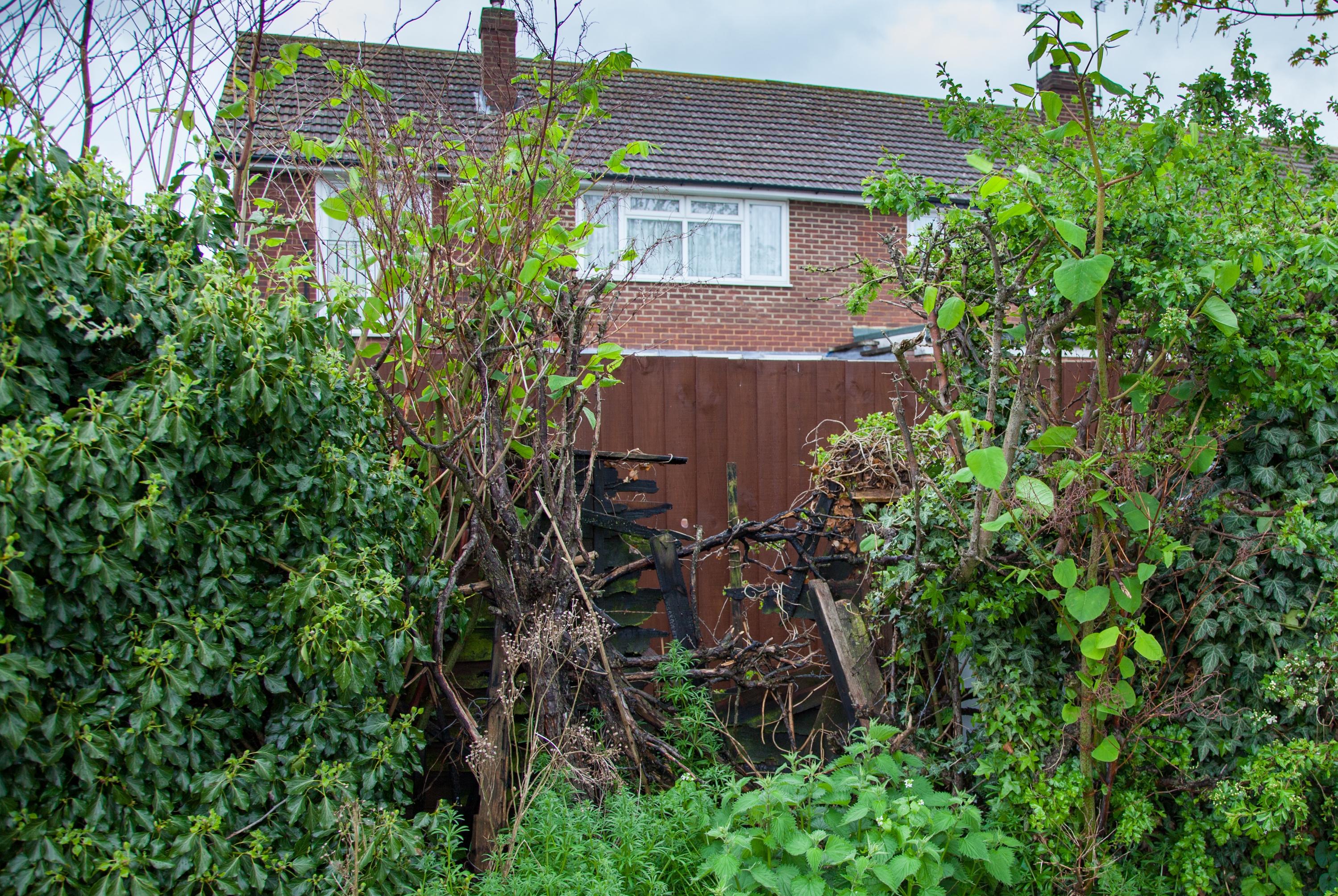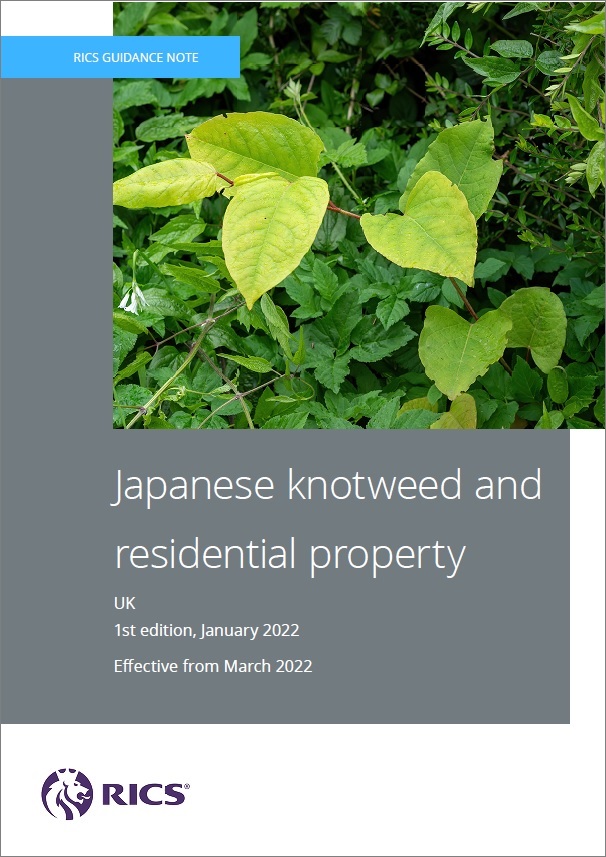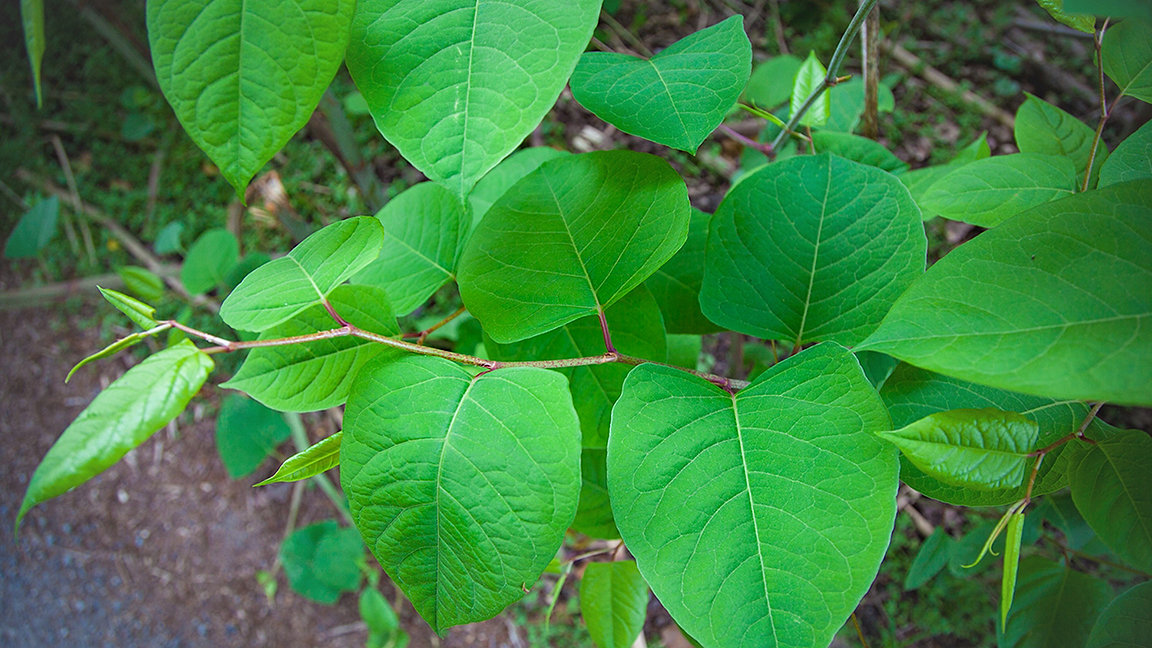
Japanese knotweed summer growth, showing the distinctive appearance with smooth, almost lime green spade-shaped leaves, growing alternately along a zigzag, purple-mottled stem © Philip Santo
On 23 March, the new RICS Japanese knotweed and residential property professional standard comes into effect. By complete coincidence, that date is exactly ten years since its predecessor, the information paper Japanese knotweed and residential property, was launched.
That paper introduced the first formal process for assessing Japanese knotweed risk with the so-called seven-metre rule, which has become a touchstone across the whole residential property market. Before that, there had been no agreed way of assessing the risk posed by the plant; subsequently it provided a straightforward route through to mortgage finance for most affected sales.
Standard focuses on impact not distance
Increasingly, however, experience confirmed early suspicions that seven metres was an overcautious measure of the distance that might be affected by the growth of Japanese knotweed. Also, valuers and surveyors never encountered properties where the plant had actually caused damage to substantial structures, even when growing in close proximity.
Although Japanese knotweed is undoubtedly capable of causing damage to garden walls and lightweight structures such as conservatories, this prompted the question: if it was not damaging residential buildings, what risk was the assessment process attempting to mitigate?
Eventually, academic research confirmed these reservations and reported three metres as being a more appropriate distance to use for the likely spread of an infestation beyond visible evidence. In 2019, the House of Commons Science and Technology Committee, describing the seven-metre rule as a 'blunt instrument', called on RICS and residential lenders to introduce a more nuanced and evidence-based assessment process.
The new standard directly addresses these concerns by introducing an assessment process that replaces the crude distance-based measure by reflecting the actual impact of an infestation at a property. The assessment process is still easy for valuers and surveyors to apply when Japanese knotweed is seen during site inspections, and it gives a straightforward categorisation of infestations.
This retains simplicity – which is essential for the residential property market – so the actions needed to make an affected property mortgageable will still be clear to all parties. The guidance has stimulated great interest since its publication, including in the media, and to date has had more than 2,000 unique downloads from the RICS website.
'The assessment process is still easy for valuers and surveyors to apply when Japanese knotweed is seen during site inspections'
Categories created for response
So what does the guidance mean for the residential practitioner? Whenever Japanese knotweed is seen within the boundaries of a property, it should be categorised at one of three levels.
-
Management Category A: Action means that Japanese knotweed is present and is causing visible material damage to a significant structure. This is likely to affect value because repair and remediation costs will be incurred.
-
Management Category B: Action means there is no material damage to structures, but that Japanese knotweed is likely to prevent use of or restrict access to amenity space. This may still affect value, but that will be related more directly to the cost of remediation because no structural repairs will be needed.
-
Management Category C: Manage means that Japanese knotweed is present, but it is not causing damage or affecting amenity. Consequently, the impact on value will be much lower because the structures and amenity of the property have not been adversely affected, and any remediation costs will be at the discretion of the owner.
When an assessment is Management Category A or B, most lenders are expected to impose retentions on mortgage advances pending receipt of a remediation specialist's report – hence the word 'Action' in the category title. By contrast, when the assessment is Management Category C: Manage, the expectation is that no retention will be imposed because the infestation has not directly affected structures or amenity at the property.
When infestations are seen off site, the previous assessment process required categorisation if they were within seven metres of the boundary. Responding to the latest research, this distance has now been reduced to three metres and falls under Management Category D: Report.
Lenders are not expected to make a mortgage retention for such cases because the property owner or mortgage applicant has no control over adjoining land. Infestations more than three metres beyond the boundary are not categorised or reported to lenders, although a record should be made in site notes.
The requirements of property owners are obviously different from those of lenders and, when reporting to clients for purposes other than lending, surveyors and valuers will still use one of the same four categories whenever Japanese knotweed is seen.
In all cases, however, there will be a recommendation for the client to obtain advice from a remediation specialist. When an infestation is seen more than three metres beyond the boundary, the detail of any reporting will depend on the type of inspection and report being provided, and the nature of the infestation.
Advice on specific remedial action is not required. As with many other potentially significant issues affecting property value or ownership, the objective for the surveyor or valuer is to identify and report the matter to the client, but then for an appropriate specialist to provide advice on what action to take. In this, there are clear parallels with problems such as dry rot, defective services or structural failure.
Again, as is the case for other property defects, the guidance acknowledges that there are many legitimate reasons why an infestation of Japanese knotweed might not be seen during a competently conducted inspection. Nevertheless, if Japanese knotweed is clearly visible on site during the normal course of an inspection then it is reasonable to expect, all other things being equal, that it should be identified and reported to the client.
There were initially some queries about whether these changes might increase potential liabilities. However, the guidance clarifies that the requirements for inspections are no greater than – but likewise no less than – those outlined in the RICS Valuation – Global Standards 2017: UK national supplement, UK VPGA 11 Valuation for residential mortgage purposes, or in RICS' Home survey standard for private surveys.
In particular, the guidance stresses that the change in the assessment process to a three-metre distance beyond a boundary does not imply any greater inspection requirement than under the previous seven-metre distance.
Recognising that its readership will be far wider than RICS members, the guidance explains the difference between mortgage valuations and surveys, and points out that valuations and pre-purchase surveys by members should not be regarded as equivalent to, or substitutes for, an inspection by a specialist remediation company.
PCA offers supporting guidance
In addition to this RICS professional standard, residential practitioners are strongly advised to download the parallel publication by the Property Care Association (PCA): Japanese knotweed – Guidance for professional valuers and surveyors. The PCA guidance is specifically designed to support the new RICS standard and gives property valuers and surveyors advice on all aspects of knotweed surveys, including identification, indicative costing for remedial treatment and remediation options.
Philip Santo FRICS is director of Philip Santo & Co and technical author of the professional standard
Contact Philip: Email | LinkedIn
Related competencies include: Inspection, Valuation, Valuation reporting and research
The RICS Member CPD Support Pack includes access to a free webinar on the new guidance – log in to the RICS online academy to access further information

